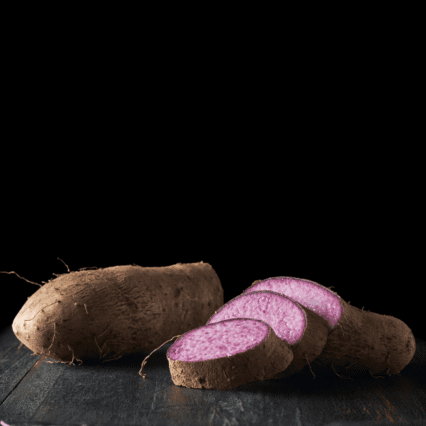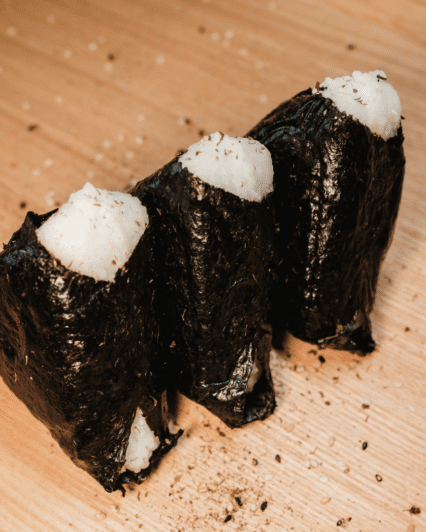What is Ube?

What is Ube?
Ube has a slightly earthy, nutty sweetness with hints of vanilla, which, along with its distinctive purple color, makes it a favorite in confections, baked goods, and desserts. While primarily used in sweeter foods, its versatility allows it to make a cameo in some savory foods too. Unlike most ingredients we associate with dessert-adjacent foods, ube offers real nutritional value — similar to sweet potatoes, it’s rich in vitamins like C and antioxidants.
Before we dive into ube’s many uses, let’s quickly compare it to another starchy root found in Southeast Asia…
Ube Versus Taro
While these two aren’t generally confused for each other given ube’s distinct visuals, they are often considered in the same vein. Both are starchy, “mashable” roots used throughout Southeast Asian cuisines, though taro has a broader global presence.
Visually, ube is known for its bright purple flesh, while taro is more of a beige. Flavor-wise, taro has a more pronounced earthy and nutty profile, whereas ube is naturally sweeter. As a result, ube is typically associated with desserts, while taro is used in a wider range of sweet and savory dishes.
Ways to Enjoy & Cook with Ube
As ube’s popularity grown in the U.S., we’re increasingly seeing it included everything from baked goods and desserts to drinks and snacks. Fresh ube can be tricky to find (yes, you can find at Uwajimaya!), but frozen or powdered ube are more available than ever. There’s even sweetened condensed ube creamer, perfect for coffee or desserts that typically use sweetened condensed milk (like ube magic bars, such as this version at Simply Recipes from Irvin Lin)
Otherwise, baked goods like brownies or blondies, cakes, cookies, rolls, scones, pancakes and waffles — even homemade bread — are all great to ube-ify; you can also make a sweet ube filling or frosting for cinnamon rolls, stuffed sweet rolls, or crepes. For quick treat, try adding powder to make an ube milkshake or smoothie.
And beyond homemade food and drinks you can make with ube, there’s an increasing array of premade ube treats available at grocery stores. For example: 
- Ube wafers and cookies
The main limitation for how to use ube is your own imagination – the possibilities are endless! It adds a nuttiness, a sweetness, and a pop of eye-catching color to almost any dish. So get creative: try it in your drinks, batters, doughs — anything you can imagine!




